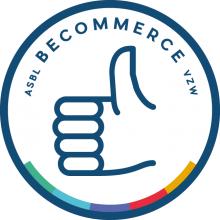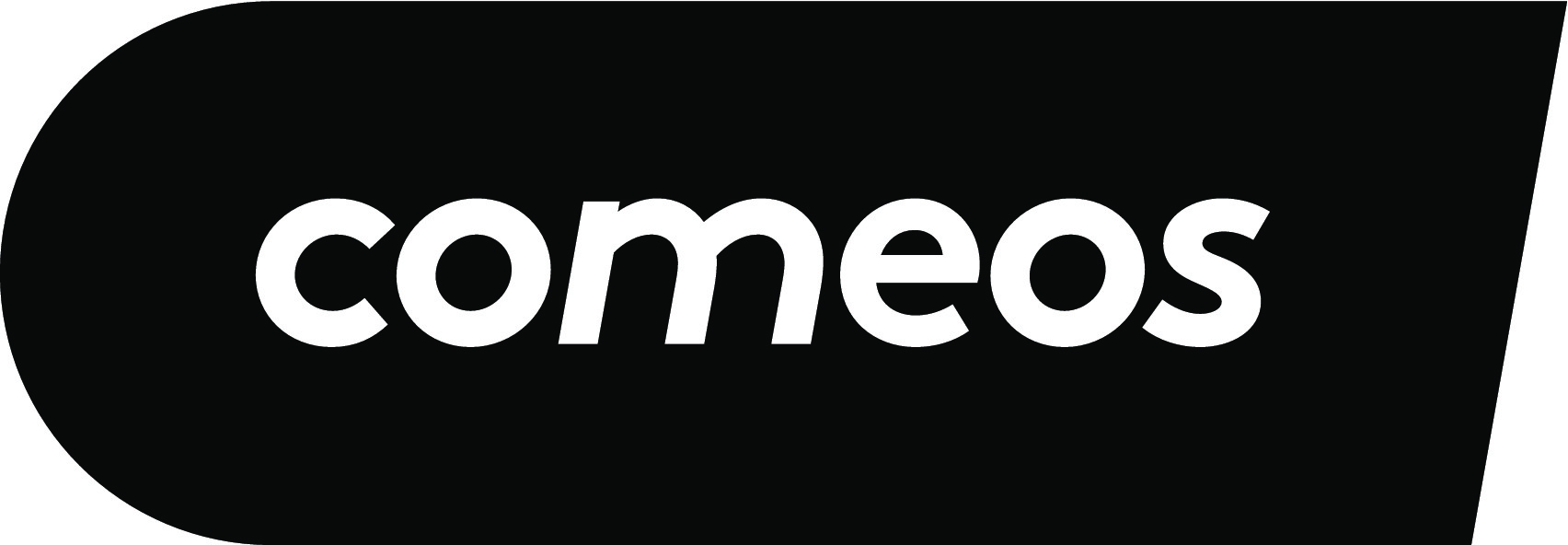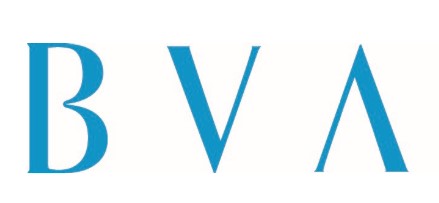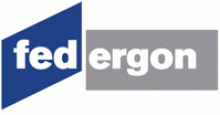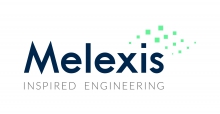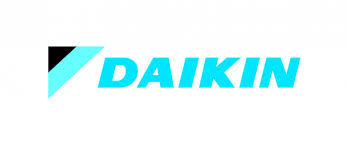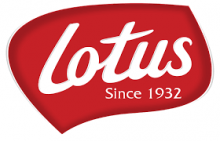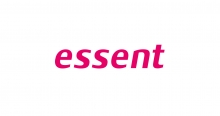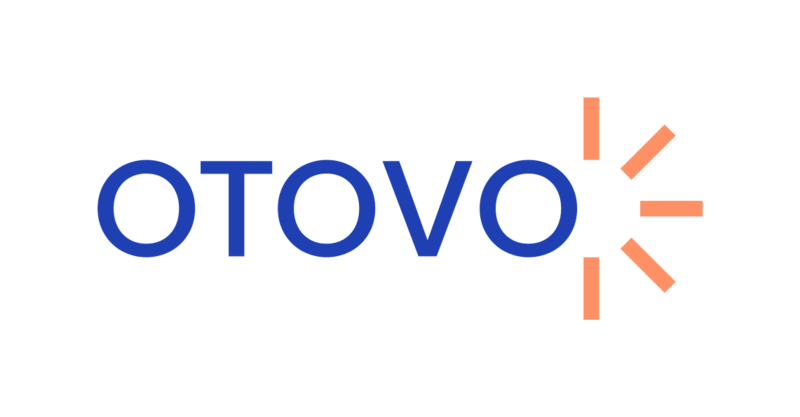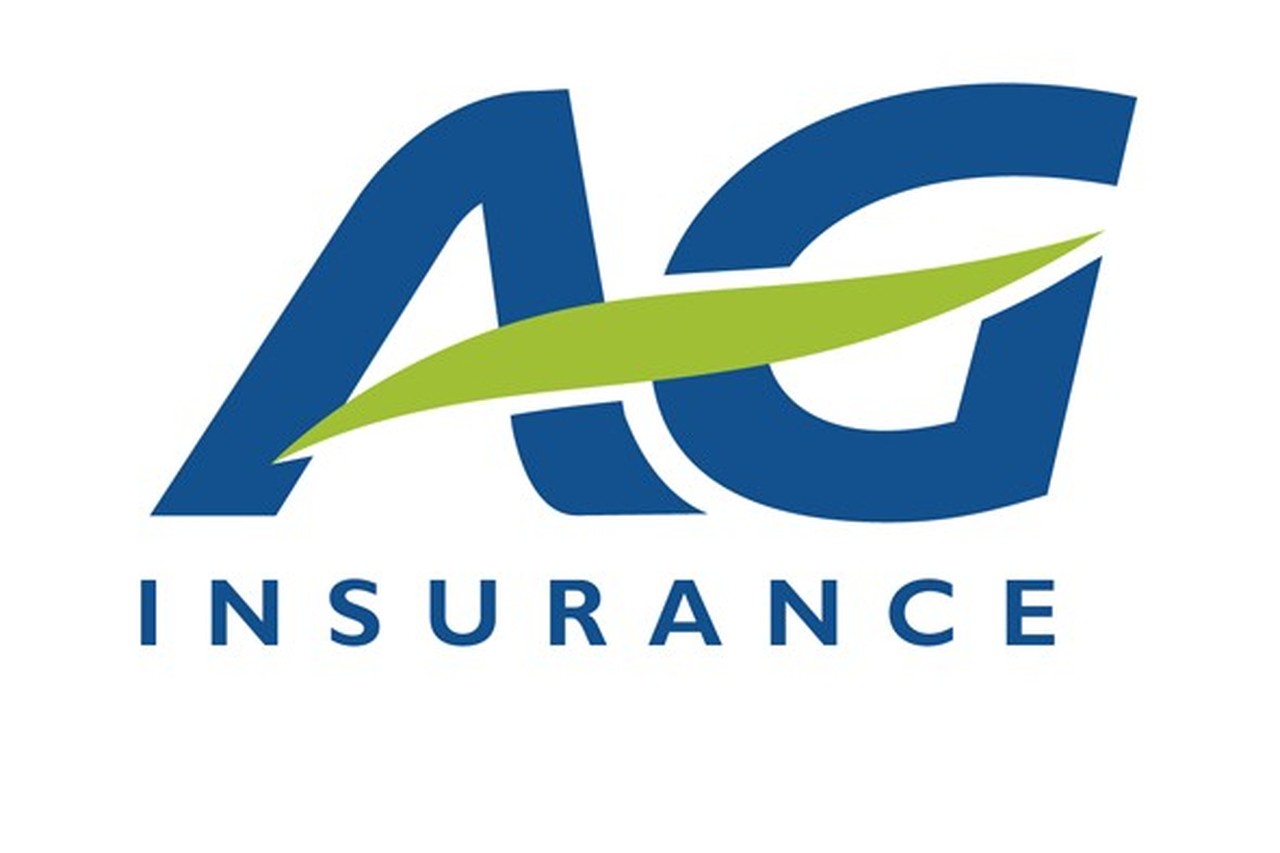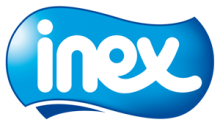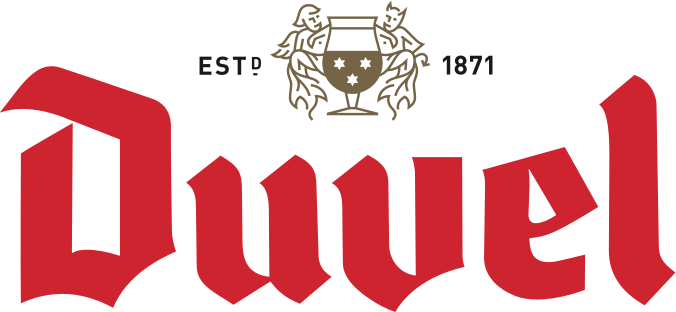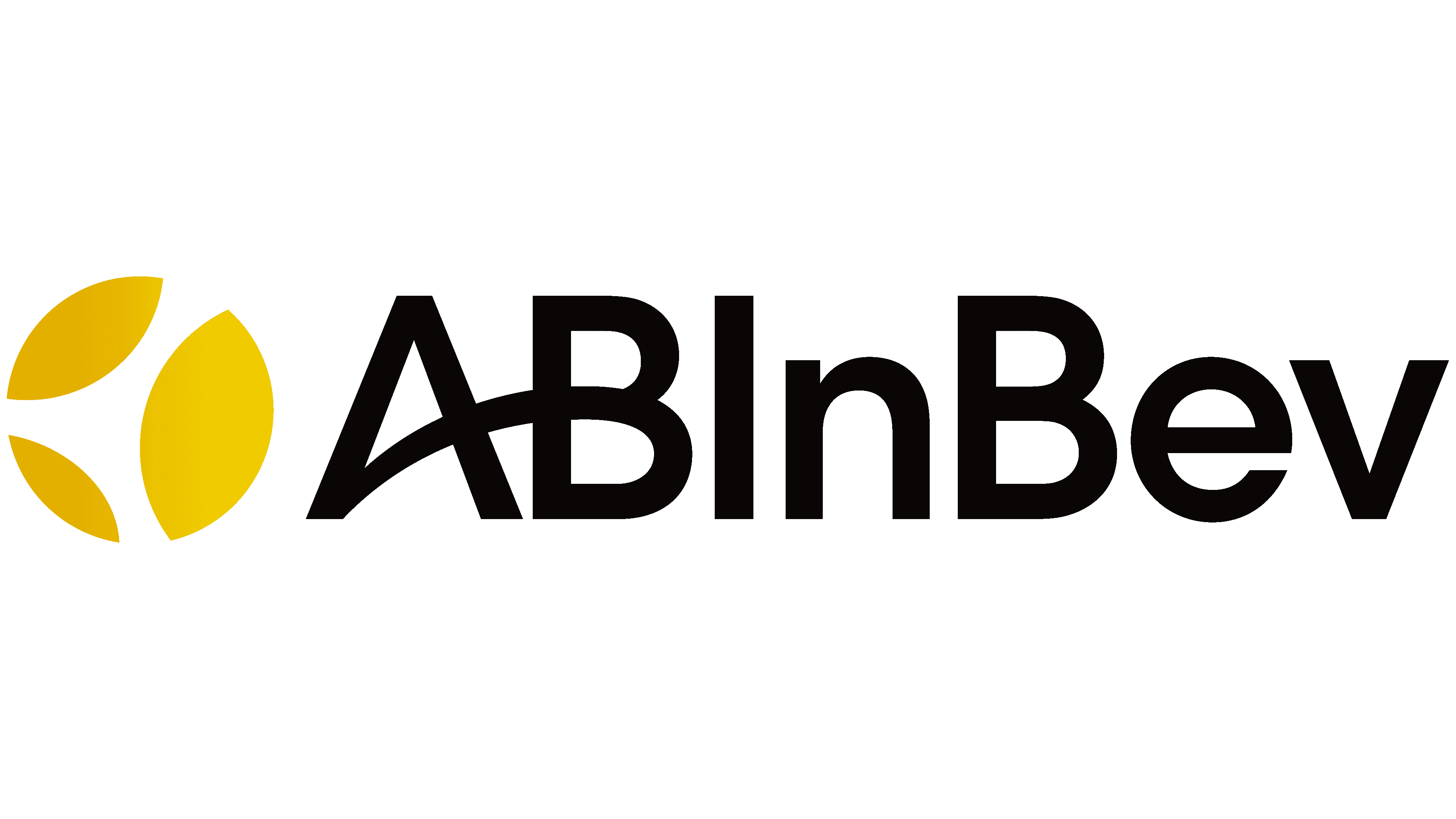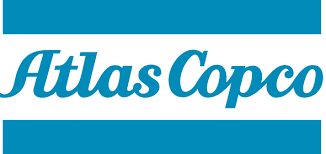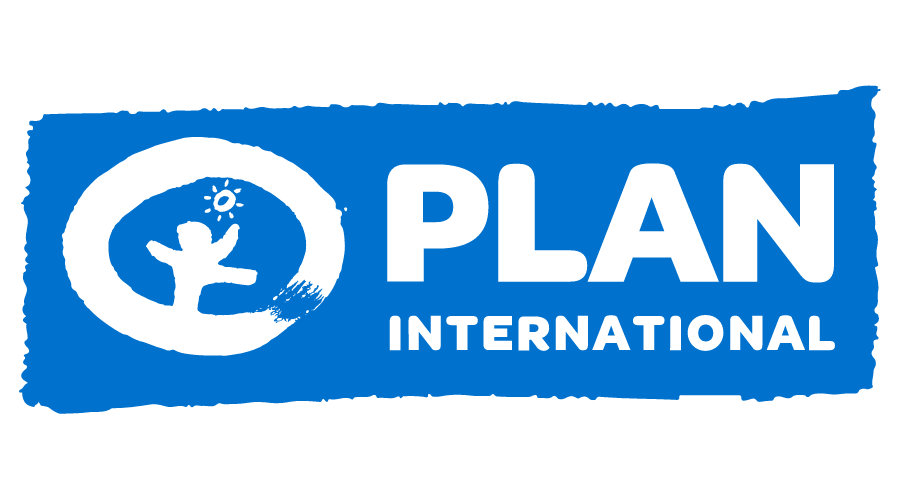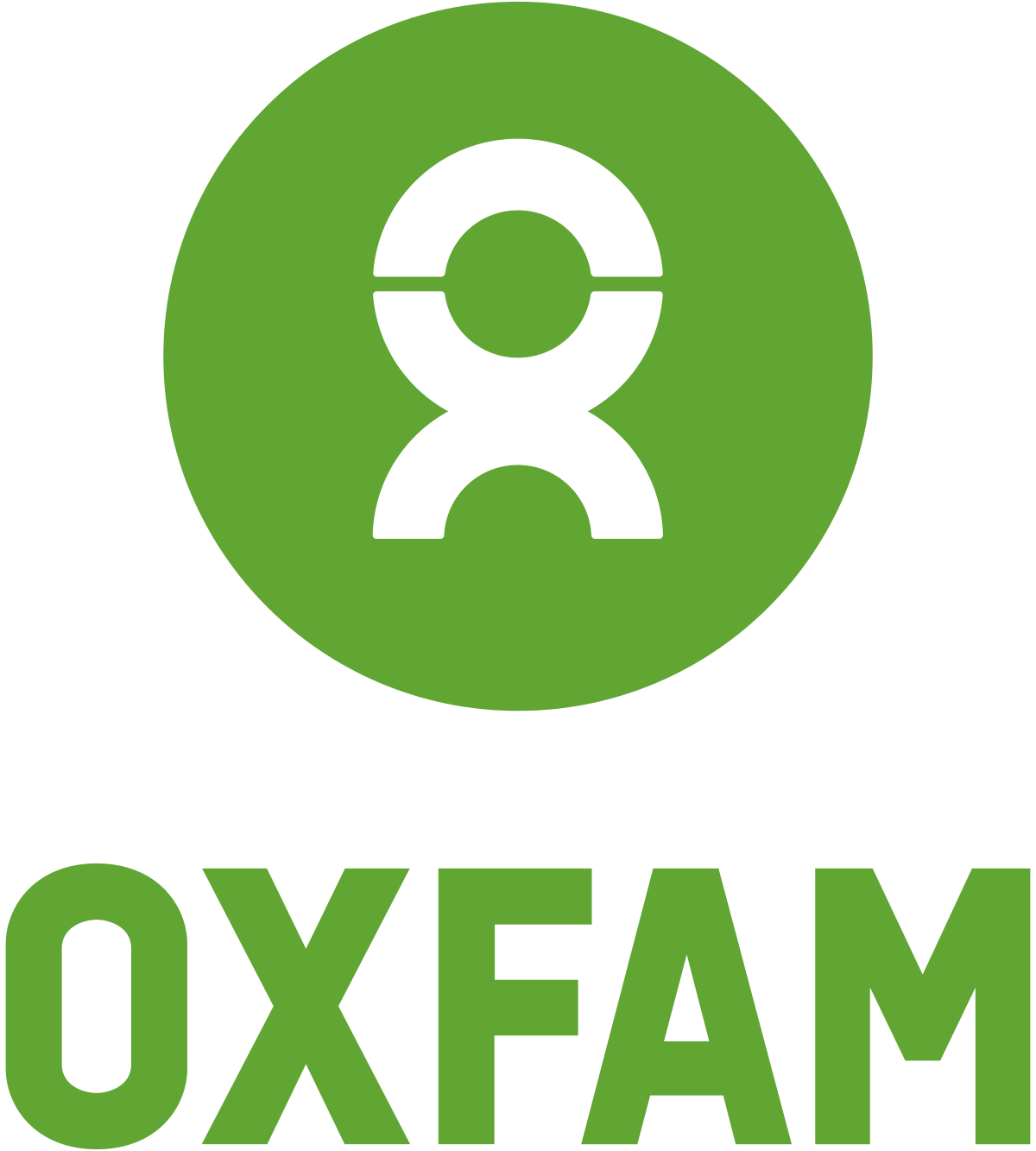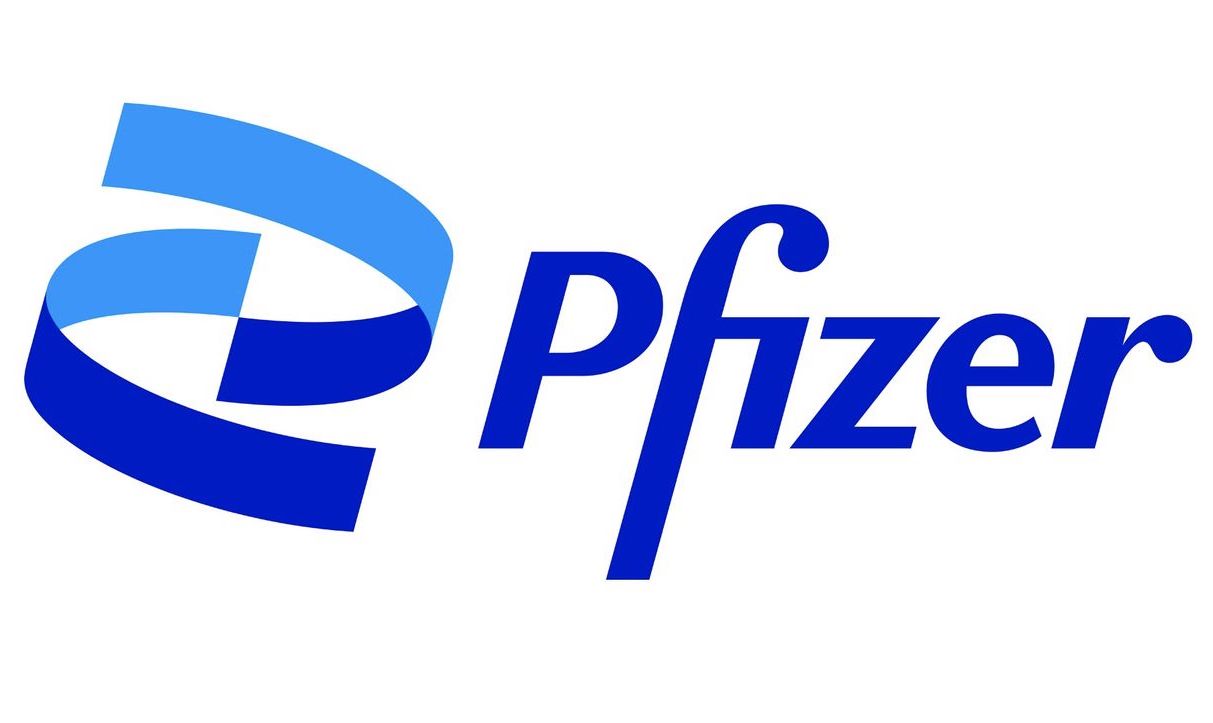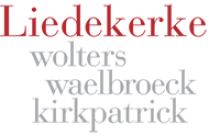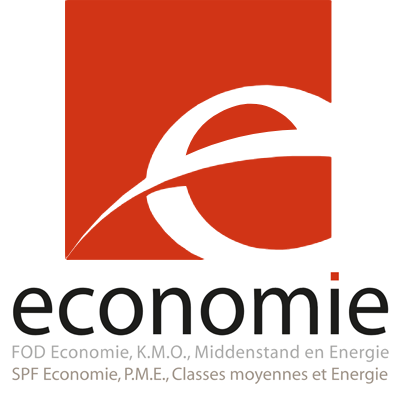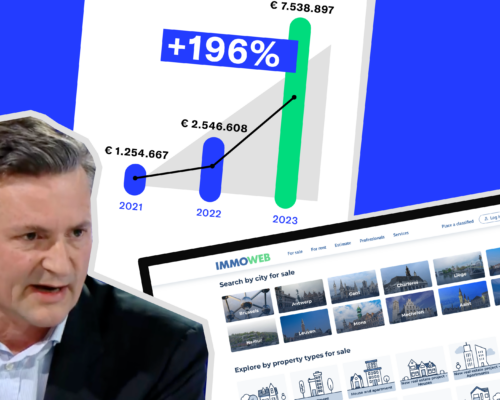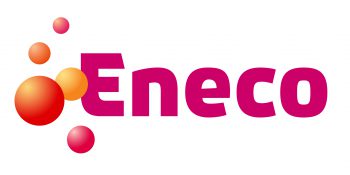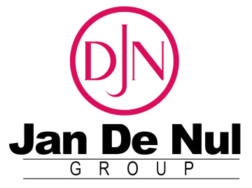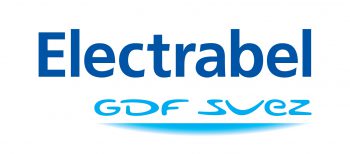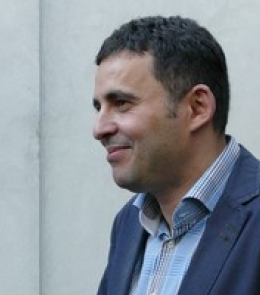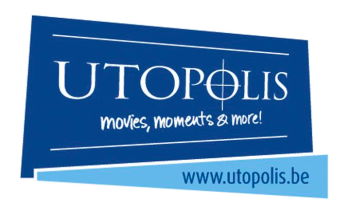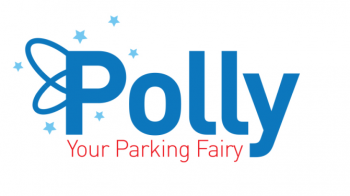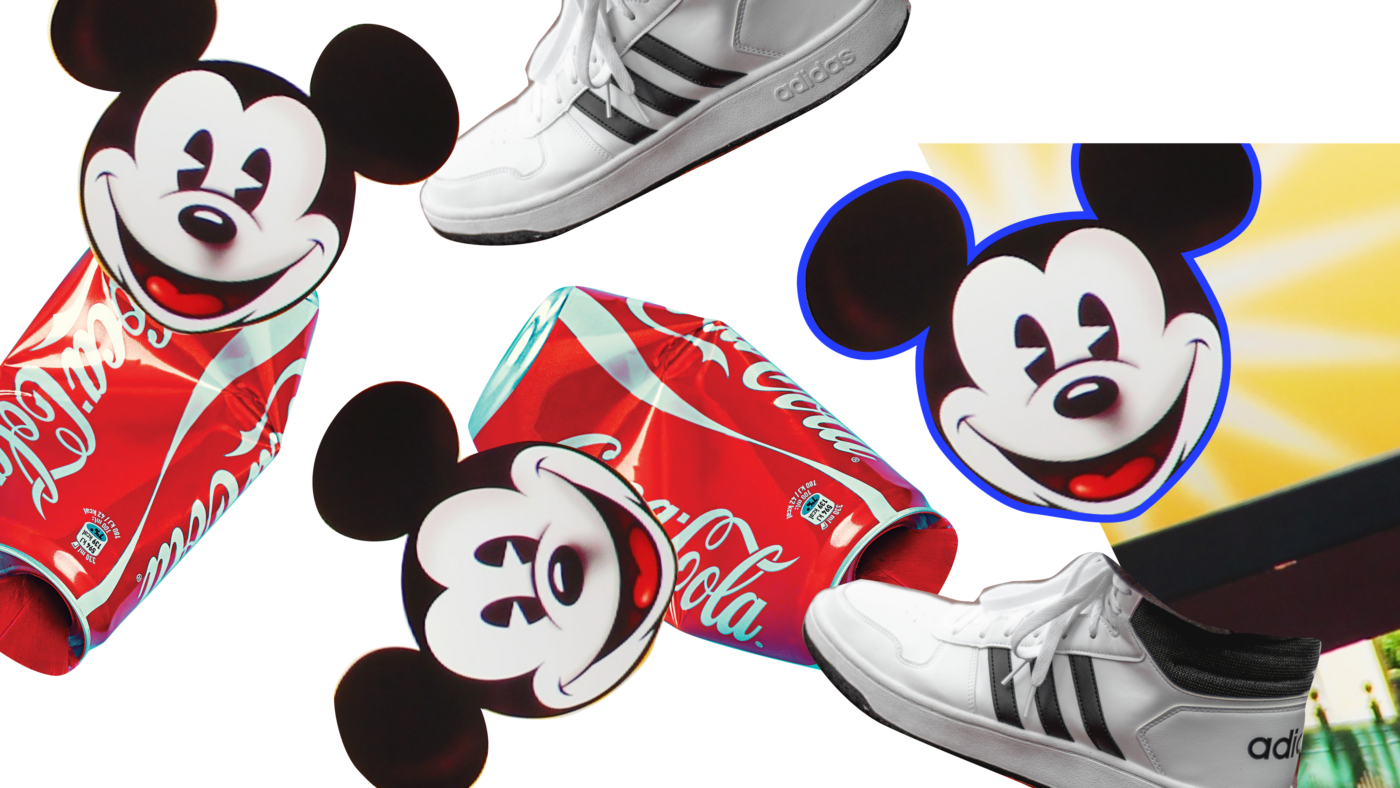Purpose definition
Brand purpose is all the rage in corporate communication today, but what exactly is it?
If you want to skip all the definitions below, we can say that purpose is the 21st century interpretation of the mission statement, but with a much stronger emphasis on CSR.
(Brand) purpose is what organizations define as the reason for their existence, beyond making money. It is a response to a brand’s moral and societal responsibilities. Often, this purpose is documented in a purpose statement.
Here’s some definitions by people who thought long and hard about purpose:
- The Purposeful Company Report defines the purpose of an organization as “its reason for being“.
- Bartlett and Ghoshal (1994) define purpose as “the statement of a company’s moral response to its broadly defined responsibilities, not an amoral plan for exploiting commercial opportunity.”
- Thakor and Quinn (2013) define it as “something that is perceived as producing a social benefit over and above the tangible pecuniary payoff that is shared by the principal and the agent.”
- Henderson and Van den Steen (2015) write that purpose is “a concrete goal or objective for the firm that reaches beyond profit maximization.”
- In their paper on the relationship between purpose and financial performance, Harvard researchers Gartenberg et al. adopt the broad view of purpose as “the meaning of a firm’s work beyond quantitative measures of financial performance”.
While adding more definitions to the mix is not particularly helpful, let’s look at what these authors agree on:
- “Meaning”. A brand purpose creates meaning for the members of an organization – a meaning that goes beyond being in business and making money. In other words: a brand purpose is a story that organizations tell about themselves – something it has in common with strategy.
- “Beyond profit”. Of course organizations and business need to be financially healthy – but brand purpose needs to add a layer on top of that.
- “Social benefit”/ “response to responsibilities”: these aspects are about how the organization sees itself as a citizen, hence the strong link to Corporate Social Responsibility or Corporate Citizenship.
- “Concrete”: although the purpose is usually quite high level, it should aim to be concrete and move beyond the idea that the organization wants to create “a better world”.
In the Purposeful Company report, the authors add that a brand purpose needs to exist on at least the following 4 dimensions:
- External: “purpose is a covenant with customers”
- Internal: “it is a reciprocal, human contract with employees”
- Societal: “mutuality of interest between society and firm”
- Moral: “a desire to contribute to human betterment”
One thing is clear: purpose is about storytelling, giving meaning to things. Also, it looks at the organization and its stakeholders as a whole, clearly puts purpose in the realm of corporate communication and reputation.
Financial benefits of purpose
Purpose sounds “soft”. It has this in common with concepts like reputation. Business executives with a strong focus on the operational and financial side of things like to ask “what’s in it for us” when confronted with reputation, CSR or reputation.
This is short-sighted and actually wrong. There is no trade-off when investing in reputation and purpose – on the contrary. There is ample research that shows the financial benefits of focusing on a good reputation, and the same goes for purpose – at least some types of purpose.
In their research, Gartenberg et al show that there are two types of purpose:
- Purpose as Family: “firms that are characterized by high camaraderie between workers”
- Purpose as Clarity: “firms that are characterized by high clarity from management”
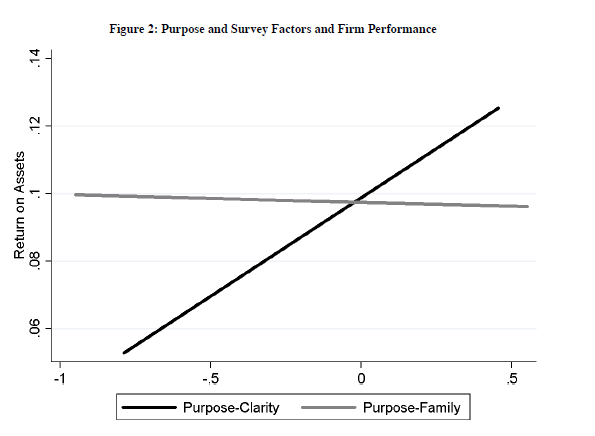
Firms with a high purpose clarity “exhibit superior accounting and stock market performance”. In other words, firms that have a clear purpose and communicate it clearly to their (internal) stakeholders, perform a lot better financially than firms that don’t.
The ingredients of high purpose clarity are:
- a clear purpose
As well as positive answers from the team members to questions like
- Management makes its expectations clear
- Management has a clear view of where the organization is going and how to get there
What drives this better performance? According to the researchers: “the perceptions of middle management and professional staff”. Having a strong purpose is not enough. Purpose also needs to be clearly communicated to the entire organization, with a special focus on the middle management and professional staff. They are instrumental in turning this clarity into value for the organization:
“meaning is created at the top; for that meaning to have impact, it needs to be experienced and felt all the way down to the floor – and especially among the ranks of middle management”
Key takeaway: purpose works because it helps middle management and professional staff understand what they’re doing.
Again, the similarities to reputation are striking.
What’s the difference between purpose, vision, mission?
Rather than debate this at length, let’s defer to the Harvard Business Review for this question. In an article, Graham Kenny distinguishes between the concepts as follows:
- Vision: “what the organization wishes to be like in some years’ time. It’s usually drawn up by senior management, in an effort to take the thinking beyond day-to-day activity in a clear, memorable way.”
- Mission: “describes what business the organization is in (and what it isn’t) both now and projecting into the future. Its aim is to provide focus for management and staff.”
This suggests that while purpose is focused more on the societal, non-financial benefits that the organization wants to create, mission and vision are more about the business and financial side of things: in which industries do we compete? What is the status that we aspire to (leader, challenger, underdog)?
Yes, but.
We do think that “mission statement” and purpose are related concepts. What we now call “purpose” – the broader meaning, the societal dimension – has always been an important part of the mission statement.
On some level, “purpose” has replaced “mission statement”. That can be seen in the explosive growth of “(brand) purpose” and the decline of the use of the term “mission statement” , particularly since 2010.
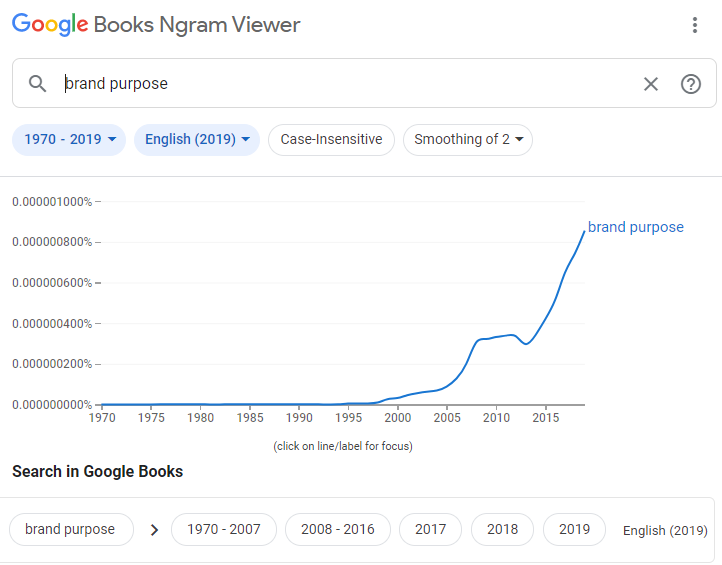
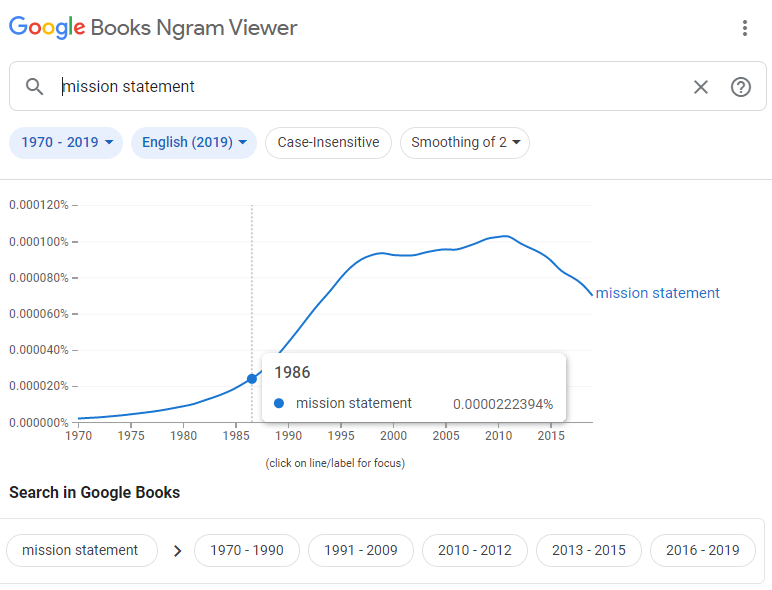
We would characterize purpose as the contemporary version of the 1970s-1980s concept of the mission statement, but with a much stronger focus on Corporate Social Responsibility.
A bit cynically, you could say that purpose is the “woke”, 21st century version of the mission statement. Organizations that talk about “purpose” rather than “mission” are much more likely to talk very explicitly about health, environment, inclusion and diversity, much more so than organizations with “mission statements” (see the example of Tesla below).
Less cynically, we might say that purpose is the holistic combination of CSR (societal responsability) and mission statement (business and operations). This is fitting in a time where the paradigm shifts (or is supposed to be shifting) from shareholder capitalism to stakeholder capitalism.
Brand purpose examples
The internet is filled with “purpose statements” for brands. A closer inspection shows that these are quite often not official purpose statements.
Also remarkable is that some companies call themselves “purpose-led” but do not have a clearly defined purpose statement or they don’t publish it externally. The odd consequence is that these firms say they are purpose-led but they don’t have a clearly defined purpose.
Unilever purpose: “Make sustainable living commonplace”.
Unilever is probably the corporate brand that has managed best to claim the “brand purpose category” (as CEO Alan Jope calls it). Here’s how Jope talked about brand purpose in a recent Bloomberg interview:
“we shouldn’t talk about purpose over profits. We truly believe that by positioning our brands on doing real good, by running our supply chain in a sustainable way, by being a responsible employer and creating great opportunities for people, a byproduct will be better financial performance. And I really hate to set up some trade-off on purpose vs. profits.”
Despite this focus on purpose, Unilever does not publish a concise, comprehensive “Corporate Purpose Statement”. Nor do its brands like Ben & Jerry’s. Rather, Unilever and its brands offer collections of guiding principles and information around themes like sustainability, health and ethics.
Novo Nordisk purpose: “Defeat diabetes”
Here’s how the former corporate communication VP at Novo Nordisk described purpose at the life sciences giant:
“Since the 1920s, Novo Nordisk has been a purpose driven company. We were founded with the sole purpose to offer life-saving treatment for people with diabetes, and today we frame this as a promise to change diabetes. Today, we engage thousands across the world with the passion, the skills, and the commitment to continue this journey to prevent, detect, treat, and ultimately cure diabetes.”
Again, no clearly labeled “purpose” section on the Novo Nordisk website.
Under its “About us” heading, Novo Nordisk includes a “Defeat Diabetes” section (ostensibly an update to the “change diabetes” purpose discussed above).
In it, Novo Nordisk talks about its “social responsibility strategy” to improve individual and public health. On that page, we find a a mix of purpose elements, mission statement and CSR initiatives. So while it feels a lot like purpose, it’s labeled as CSR.
Disney purpose: “We create happiness by providing the finest in entertainment for people of all ages, everywhere.”
Disney is an example of an organization that is often quoted in the context of purpose, but that doesn’t have a clearly labeled Purpose Statement on its corporate website. Very often, the purpose is abbreviated to “create happiness”.
In fact, its purpose is somewhat hidden in a blog post at the Disney Institute on employee behavior and corporate culture.
By contrast, it does have a clear “mission statement”:
“The mission of The Walt Disney Company is to entertain, inform and inspire people around the globe through the power of unparalleled storytelling, reflecting the iconic brands, creative minds and innovative technologies that make ours the world’s premier entertainment company.”
There’s a strong similarity between the purpose and the mission (“entertainment”), but the word happiness is conspicuously absent in the mission statement.
Tesla purpose. “To accelerate the world’s transition to sustainable energy.”
Tesla is one of those firms which is often quoted as having a strong purpose, but it doesn’t talk about purpose. Rather, it talks about its “mission statement”.
This underscores the similarities in the concepts of mission and purpose.
On the other hand, what lacks in the Tesla corporate brand are references to inclusion, diversity, environment, or indeed employee relations (which in Tesla’s case are sometimes strained ).
Tesla has clear convictions about its societal impact, but it’s not “woke” or overly environmental. So as a thought experiment, then, would you consider Tesla to be purpose-led or not?
What types of purpose statement exist?
In “Meaning Inc.”, Gurnek Bains describes 6 types of purpose statements that can energize stakeholders.
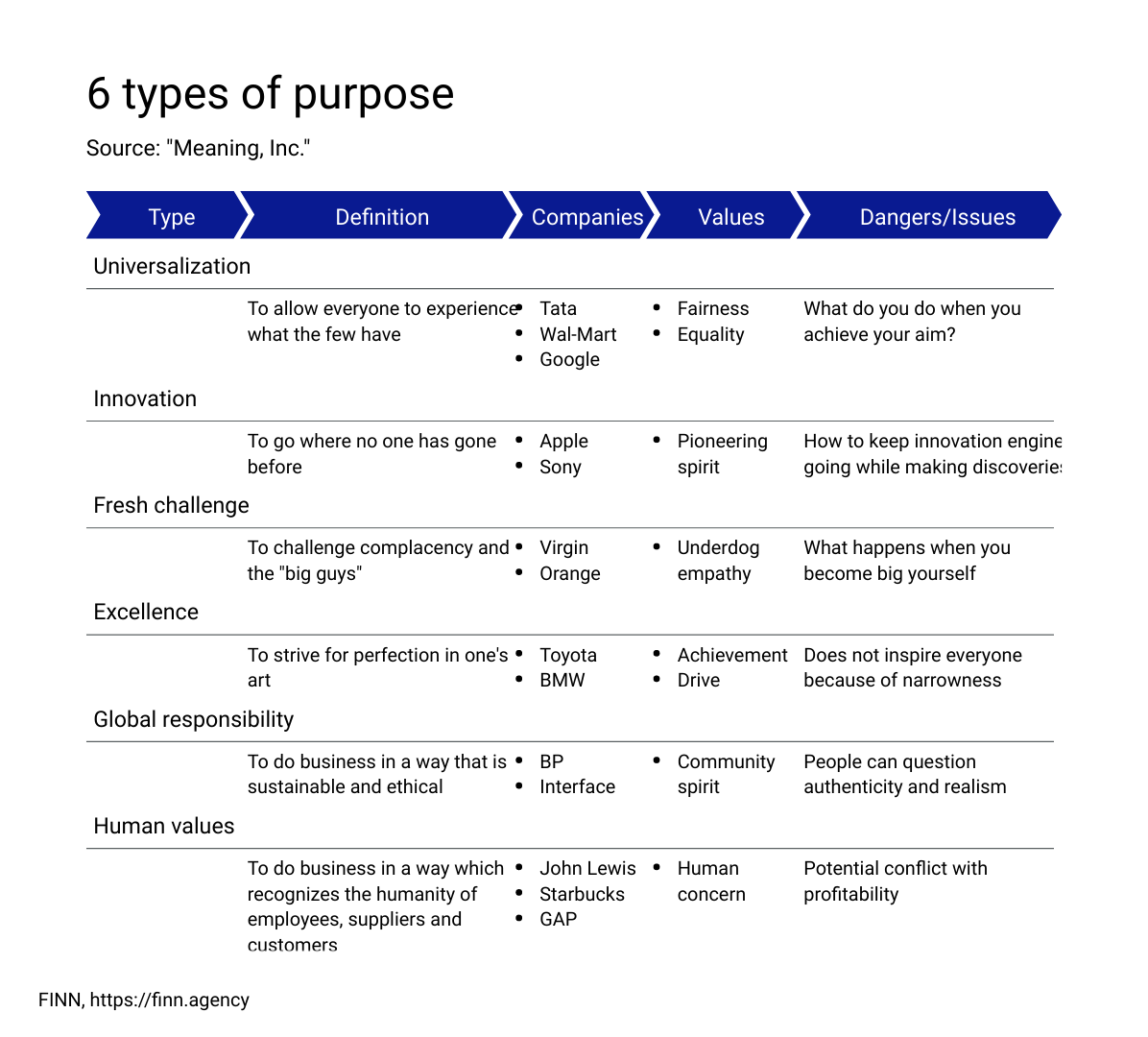
How to define your purpose statement? The 4-step approach
Given the four dimensions we discussed earlier (internal and external relations, societal and moral), it stands to reason that brand purpose is not something you can cobble together in a brainstorm session.
“It incorporates the essential elements of a mission statement, a corporate credo as an expression of a code of ethics, and the vision of the organisation’s future. Therefore, it must take into account the expectations of the organisation’s internal and external stakeholders, the moral and ethical stance of the business, and the values, beliefs, and norms of the organisation’s culture.” (Purposeful Company Interim Report, p. 19)
That’s a lot of work. With our clients, we use a simple but powerful exercise to discuss brand purpose.
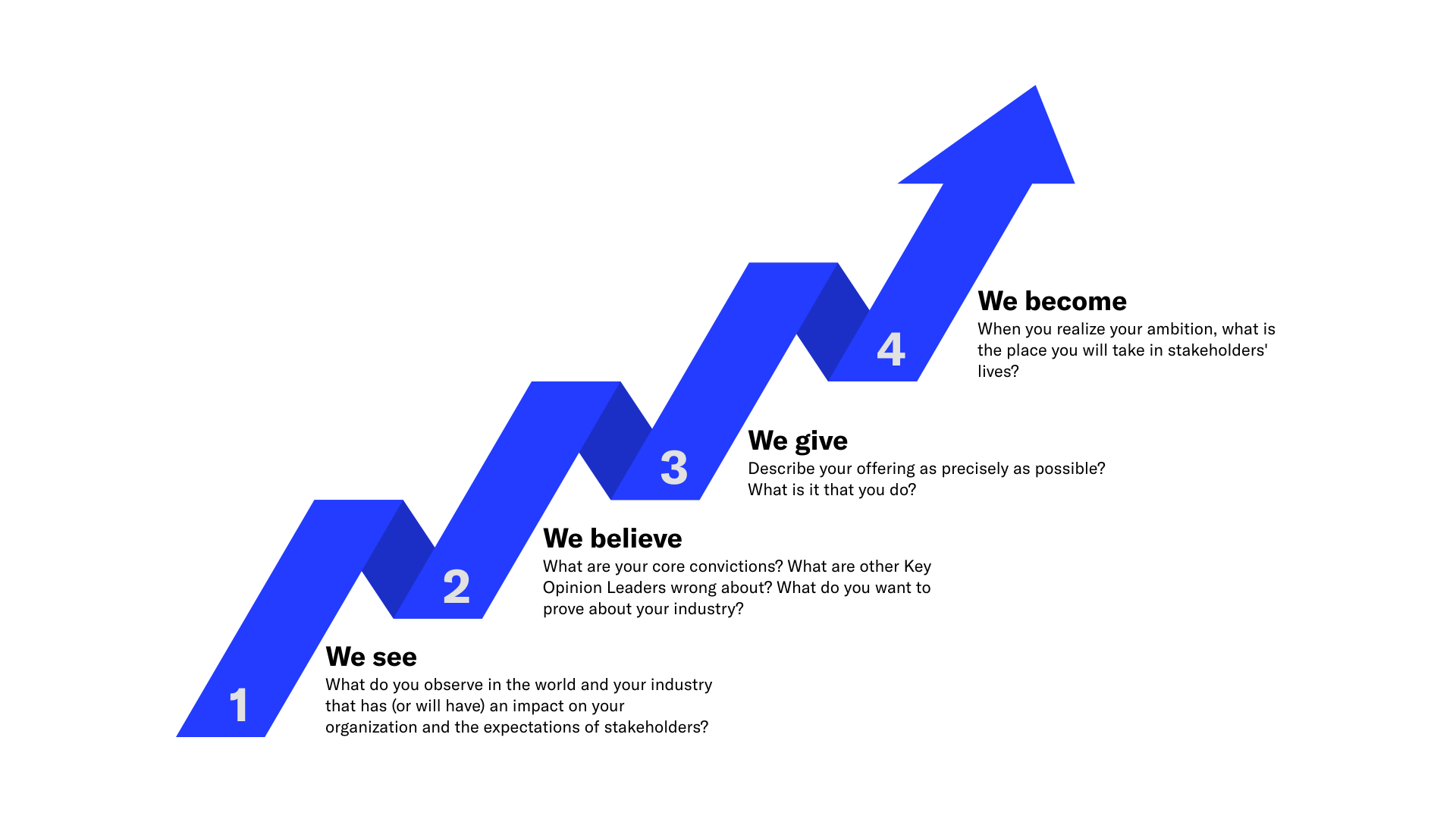
“We see”
It starts with an observation of what we are seeing in society and our industry (“we see”). For this, input can be asked from a number of internal and even external stakeholders. It can take the form of a formal PESTEL workshop if needed. Here are some relevant questions to start the discussion with:
What societal shifts are relevant for our stakeholders (internal and external, within our industry and society) and for us?
- What trends exist in the world and in our industry?
- What are some issues that our stakeholders have identified?
- How big are these issues for our stakeholders?
- How are competitors dealing with these trends and issues?
“We believe”
In a second step, we discuss the core beliefs or convictions of the organization about these observations about the outside world (“we believe”). This is usually in a workshop with management, but these beliefs can be collected throughout the organization – front line workers, middle management, experts, top management, board and advisors.
- What is the current paradigm to answer these issues?
- What do we believe about these trends and issues that no one else believes (yet)?
- What are some new, counterintuitive ways that people are trying to address these issues?
- What are some irritating ideas about these issues (“that can never work”)?
“We give”
In a third step, we ask how the organization responds to these issues (“we give”).
- How do we address the needs of our stakeholders?
- How do our solutions conform to our beliefs?
- What are we not doing (yet) that we should be doing?
- What will we do in the short or long term?
“We become”
Finally, to move to the aspirational level, we ask what we want to become for our stakeholders in the longer term (“we become”).
- What place do we want to take in stakeholders’ lives?
- How do we want to be remembered as an organization?
The beauty of this model is that it can be used in a 2 hour meeting if you’re a small organization. But it can also be scaled up to the level of a huge organization, using surveys, workshops, stakeholder and community engagement.
In any case, after going through this process, you should be able to formulate a strong brand purpose that is both rooted in your core (“we believe”, “we give”), informed by the outside world (“we see”) and always striving to become better (“we become”).
Let us know in the comments: what is your organization doing on the topic of purpose?
Purpose at FINN
At FINN, we have helped organizations of all sizes find and define their purpose – and communicate them clearly and boldly to their stakeholders. Contact us today to discuss how we can turn your organization into a purpose-led organization.
Further reading
- BIG Innovation Centre, “The Purposeful Company. Interim Report”, 2011
- Gartenberg, Claudine, Andrea Prat, and George Serafeim, “Corporate Purpose and Financial Performance.” Harvard Business School Working Paper, No. 17-023, September 2016.
- Kenny, Graham. “Your Company’s Purpose is Not its Vision, Mission or Values”, Harvard Business Review, 2014
- Stormer, Suasanne, “How Novo Nordisk’s Corporate DNA – “to act responsibly” – Drives Innovation”, Management Exchange
- Bains, Gurnek, “Meaning Inc. The Blueprint for Business Success in the 21st Century”, Profile Books, 310 p.
